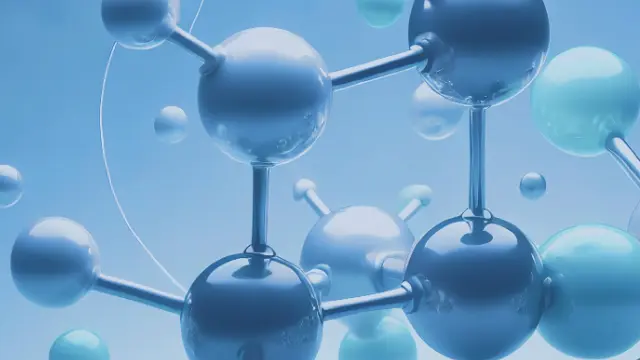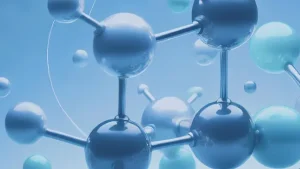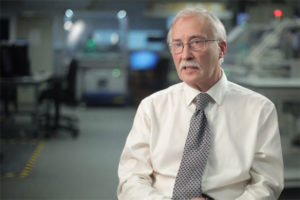Will We Switch to Renewable Energy Sources?
The advantages of renewable energy and how energy consumption will change in 50 years

In developed countries, tap water is disinfected with chlorine and its compounds, which prevents the spread of harmful viruses and bacteria. Chlorine also enhances the effectiveness of reagents used in coagulation—a process that binds tiny impurities into larger flocs. These flocs are then trapped by filters, allowing the water to become clean and clear before being delivered to municipal water systems. Without chlorine, this process is slower and less effective.
Chlorination, however, is more complex than it might seem. Under normal conditions, chlorine is a toxic gas with a strong odor. Treatment plants receive chlorine in liquefied form and store it in large cylinders. Special equipment converts it back to gas, heats it, purifies it, and mixes it with water. This reaction between chlorine molecules (Cl₂) and water (H₂O) produces various chlorine-based compounds.
One of these compounds, the hypochlorite ion (ClO⁻), like chlorine itself, is a powerful oxidizing agent. Its small size enables it to penetrate the cell membranes of microorganisms, disrupt enzymes, and affect ATP, a molecule essential for cellular energy. Disrupting ATP effectively kills the cell. This ability of chlorine compounds to destroy pathogenic bacteria and viruses in tap water makes them highly effective. To ensure safety, chlorine is added in tiny, regulated amounts, which are harmless to humans and easily neutralized by digestive juices [1].
Despite strict regulations, environmental risks remain. Each chlorine cylinder weighs about 800 kg, and chlorine gas disperses quickly when exposed to air. A breach during delivery could cause serious harm.
Additionally, many water treatment facilities in former Soviet countries date back to the 1930s, when industrialization began. Over the decades, cities have expanded, and treatment plants are now within urban areas. Moving these systems outside city limits is a complex engineering challenge, often involving the rerouting of networks. For these reasons, chemists and physicists are actively seeking chlorine alternatives.
One possible method is ultraviolet (UV) disinfection. UV effectively eliminates all pathogens, unlike chlorine, which some microorganisms resist. However, continuously exposing water to UV as it travels through the network to consumers is impractical, raising the risk of recontamination. By remaining in the water, chlorine protects against bacteria and viruses.
Another approach is to replace chlorine with safer chlorine-based compounds, particularly sodium hypochlorite (NaClO). This substance is less toxic, easier to store, and leaves no strong aftertaste while effectively disinfecting water.
Additionally, sodium hypochlorite generates fewer harmful chlorinated byproducts, such as chloroform. Pure chlorine is a stronger oxidizer and acidifies water during treatment, promoting the formation of these byproducts. Using sodium hypochlorite reduces this risk, making it a safer and more environmentally friendly alternative.
Lev Fesenko: “Our department developed a technology for producing sodium hypochlorite, which is unique because it allows the product to be generated on-site rather than needing transport from factories. Over 20 years ago, St. Petersburg used foreign equipment to build two large hypochlorite production stations at its southern and northern water treatment facilities. This product has since replaced chlorine and is effectively used for water disinfection.”
The production technology for sodium hypochlorite is relatively simple: it’s generated through electrolysis of a saltwater solution (NaCl). In a particular container, two electrodes are placed—a positive (anode) and a negative (cathode). When an electric current is applied, negatively charged chlorine ions move toward the cathode. In contrast, positively charged sodium ions move toward the anode—a series of reactions at the anode results in the formation of sodium hypochlorite.
Earlier, anodes were made with graphite, but graphite is fragile. Around the 1980s, scientists proposed using metals from the platinum group, which includes six metals: iridium, ruthenium, osmium, rhodium, palladium, and platinum. Russia has significant metal reserves in the Taymyr Peninsula near Norilsk [2].
These platinum-group metals are highly resistant to heat and corrosion and are excellent catalysts for managing chemical reaction rates. Initially, anodes were coated with ruthenium oxides, but later, iridium oxide was added to improve corrosion resistance. Today, platinum-based anodes are used in many water treatment facilities in Russia, as other metal oxides cannot produce sodium hypochlorite. However, the coating on these anodes inevitably degrades, requiring electrode replacement every 10 years—a complex and costly procedure.
A year ago, the Department of Water Management, Engineering Networks, and Environmental Protection at South-Russian State Polytechnic University (YURGPU) experimented with a new metal: palladium [3]. Known for its use in high-end jewellery, palladium also significantly reduces environmental impact, such as in automotive catalytic converters that reduce harmful emissions.
Russia produces substantial amounts of palladium—approximately 150–170 tons annually, accounting for about 40% of the global supply [2]. Palladium is 3–4 times less expensive than the rarer iridium, which is widely used in sodium hypochlorite production today.
Research at YURGPU has shown that partially replacing iridium with palladium increases anode activity in the electrochemical reaction, reducing electricity consumption while maintaining the same chlorine output. Most importantly, this substitution lowered energy consumption for electrolysis—a highly energy-intensive process—by about 20%.
In the coming months, department specialists will further refine mixed oxide coatings of ruthenium and iridium combined with palladium to optimize anode efficiency, cost, and durability. The new electrodes are already slated for implementation at several water treatment facilities.
One of the most promising uses of palladium lies in hydrogen energy, which could significantly reduce dependence on fossil fuels [4]. Today, hydrogen is produced by electrolysis of alkaline solutions using platinum electrodes. However, electrodes made of palladium coated with fine platinum particles show promising results: they produce hydrogen more rapidly, with lower energy consumption and at a lower temperature, eliminating the need for heat removal from the reactor.
A key challenge for hydrogen energy is hydrogen transportation [5]. It’s typically transported in a high-pressure gaseous state, requiring special safety measures. Here, palladium again proves helpful. All platinum-group metals absorb hydrogen, often at volumes exceeding their own. For instance, platinum absorbs 100 times its volume in hydrogen under normal conditions, while palladium can absorb hydrogen at volumes up to 900 times its own [6]. This makes palladium an effective hydrogen storage and transport solution, greatly enhancing safety.
Another environmentally friendly application of palladium is producing hydrocarbons without petroleum. This is achieved through the Fischer-Tropsch process, a catalytic chemical reaction in which carbon monoxide (CO) and hydrogen are converted into methanol, ether oils, and other liquid hydrocarbons [7]. Hydrogen and carbon monoxide are used for this reaction, and they can be obtained by passing methane through a porous palladium material. As a catalyst, palladium accelerates reactions, reduces energy consumption, and increases the concentration of the desired product in the final mixture.
Chemists are exploring alternatives to chlorine compounds. For instance, in 2021, scientists at Cardiff University studied the potential for water purification using hydrogen peroxide generated on a gold and platinum catalyst [8]. A bimetallic catalyst based on palladium and gold has also shown promise as an efficient “accelerator” for this reaction, generating peroxide directly from water. Additionally, palladium, one of the most effective catalysts for dechlorination, holds potential in treating industrial wastewater, transforming chlorinated compounds into less toxic substances.
There are also challenges that traditional methods cannot address. For example, airplanes are treated with an ethylene glycol-based solution before takeoff to prevent icing. Significant volumes of water flow off treated aircraft in major airports like Sheremetyevo, Domodedovo, and Pulkovo in St. Petersburg. This runoff cannot be sent to standard sewage treatment facilities and must be processed locally to remove harmful organic compounds. Electro-oxidation and catalytic processes, in which palladium can act as a catalyst, are suitable for these needs, making palladium a foundation for eco-friendly catalysis.
Using microorganisms in biological treatment plants is promising for removing ethylene glycol from water. While microorganisms cannot process ethylene glycol directly, preliminary research from the Department of Water Management, Engineering Networks, and Environmental Protection at South-Russian State Polytechnic University (YURGPU) suggests that ethylene glycol can be converted to aldehydes through electrochemical reactions using a palladium anode. These aldehydes are then easily oxidized in biological treatment facilities, allowing the water to be safely discharged into sewage treatment systems and reused.
This article was first published on PostNauka: https://postnauka.org/longreads/157473
1. Chlorination for water treatment. Oxfam WASH Resources
2. State report ‘On the state and utilisation of mineral resources of the Russian Federation in 2015’. Ministry of Natural Resources and Environment of the Russian Federation
3. NPI creates new approaches to drinking water purification. NPI Press Service, 8 February 2023
4. Singla, M. K., Nijhawan, P., & Oberoi, A. S. (2021). Hydrogen fuel and fuel cell technology for cleaner future: a review. Environmental Science and Pollution Research, 28(13), 15607–15626
5. Yue, M., Lambert, H., Pahon, E., Roche, R., Jemei, S., & Hissel, D. (2021). Hydrogen energy systems: A critical review of technologies, applications, trends and challenges. Renewable and Sustainable Energy Reviews, 146, 111180
6. Rothenberger, K., Cugini, A., Howard, B., et al. (2004). High pressure hydrogen permeance of porous stainless steel coated with a thin palladium film via electroless plating. Journal of Membrane Science, 244(1–2), 55–68
7. Speight, J. G. (2022). The Fischer–Tropsch process. Biomass Processes and Chemicals, 223–256
8. Richards, T., Harrhy, J.H., Lewis, R.J., et al. (2021). A residue-free approach to water disinfection using catalytic in situ generation of reactive oxygen species. Nature Catalysis, 4(7), 575–585.

The advantages of renewable energy and how energy consumption will change in 50 years

Past practices and new solutions

Biochemist Ian Wilson on individual receptiveness to drugs, pharmacokinetics, and in vitro technologies of dru...